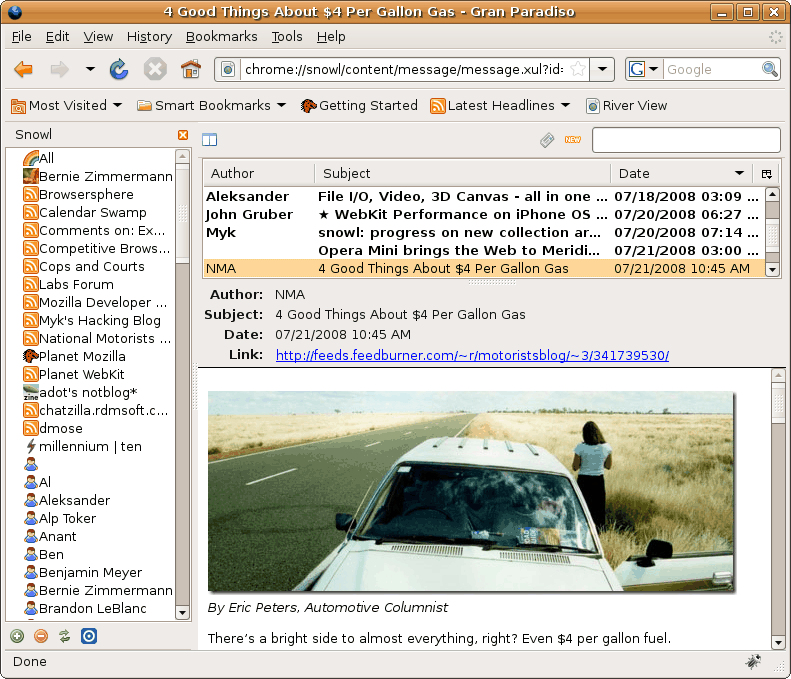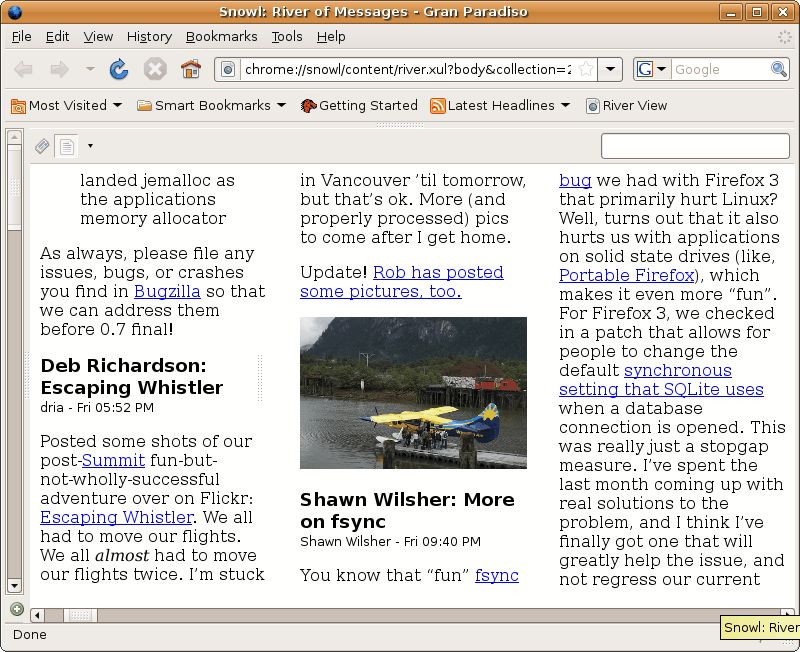Snowl is a prototype application from Mozilla Labs that tries to bring various communication plattforms under a single roof. The early prototype supports Twitter and RSS News Feeds currently but the developers of the project mentioned already that they are working on other communication platforms like Facebook, Google Talk or AIM.
The first question that obviously comes to mind is how Snowl is any different from current RSS News Feed Readers and the honest answer at this point has to be that it is not that different.
Twitter is offering RSS News Feeds as well which means that any RSS Reader can currently display the same information that Mozilla Snowl offers.
The only difference lies in the interface currently which provides two different view modes. The first resembles desktop email clients like Thunderbird.
It is divided into three different panes: on the left the RSS News Feeds, in the upper half the messages of the selected RSS News Feed and at the bottom half the selected message.

The second view mode is called River of Messages which looks pretty much like a newspaper when the messages are expanded. That mode looks pretty nice but may not be ideal if you want a quick overview of new articles and posts as it does not display that many at the same time in its interface.
If you plan on reading all anyway though, it may be the right mode for you.

Snowl does have a few of the problems that I experienced with Firefox’s Live Bookmarks settings.
Importing RSS News Feeds slows down the system to a halt. That’s extremely frustrating if you import hundreds of feeds from an OPML file. The same happens if you update the feeds, something that you will never experience in external applications or online services like Google Reader.
That alone is reason enough for me to not use Mozilla Snowl on a regular basis. The developers have some interesting plans for Snowl. They want to add true two-way communication capabilities, for example reading and writing Twitter messages.
Update: Mozilla Snowl has not been updated since 2010. The project appears dead and the most recent version published on Mozilla’s Add-ons repository website is not compatible anymore with recent versions of the web browser.